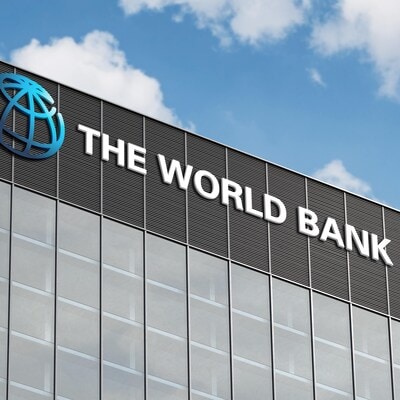World Bank report: Poorest countries confront 18-yr high debt as conflicts & disasters surge | World News

A new report by the World Bank reveals that the 26 poorest countries, which are home to 40 per cent of the global population living in extreme poverty, are experiencing their highest levels of debt since 2006. These countries are also becoming increasingly vulnerable to natural disasters and other external shocks.
The report indicates that, on average, these economies are worse off today than they were before the Covid-19 pandemic. While most of the world has economically recovered, these nations have struggled to resume growth, highlighting a widening economic divide.
Click here to connect with us on WhatsApp
Setback in poverty eradication efforts
Published just ahead of the World Bank and International Monetary Fund’s annual meetings in Washington, the report underscores a significant reversal in the fight against extreme poverty. This coincides with the World Bank’s ongoing efforts to raise $100 billion to replenish the International Development Association (IDA), which provides critical financial assistance to the world’s poorest nations.
The 26 poorest nations, with annual per capita incomes below $1,145, are increasingly dependent on IDA grants and near-zero interest loans. The report highlights an alarming debt-to-GDP ratio, now averaging 72 per cent — the highest in 18 years. Half of these countries are either already in debt distress or face a high risk of reaching that point.
Approximately two-thirds of these countries are embroiled in conflicts or suffer from institutional fragility, both of which deter foreign investment. Nearly all of these nations’ economies are reliant on commodity exports, leaving them vulnerable to volatile market cycles.
IDA’s support for poor economies
According to World Bank Chief Economist Indermit Gill, IDA has played a crucial role in supporting these economies over the last five years. As traditional funding sources have dried up, IDA has directed substantial resources toward helping these nations remain afloat amid economic challenges.
IDA, which is replenished every three years by contributions from World Bank member countries, raised a record $93 billion in 2021. World Bank President Ajay Banga aims to exceed this figure, targeting over $100 billion in pledges by December 2024.
The report also highlights the growing impact of natural disasters on these nations. From 2011 to 2023, such events caused annual economic losses of 2 per cent of GDP—five times the average seen in lower-middle-income countries. This underscores the urgent need for greater investment in disaster resilience.
The report calls for these countries to strengthen their domestic financial systems, particularly by improving tax collection and public spending efficiency. With large informal economies operating outside the tax system, simplifying taxpayer registration and enhancing administrative efficiency are crucial steps toward self-sufficiency.
(With agency inputs)
First Published: Oct 14 2024 | 9:45 AM IST




